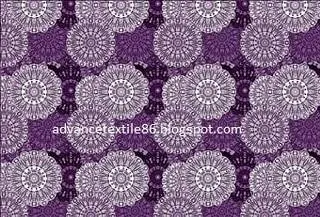4D printing
4D
printing uses the same
technique as 3D printing by storing computer-programmed spreads in
successive layers to create a three-dimensional object. Adds the dimension of
the conversion 4D printing over time. It is, therefore, a kind of
programmable substance, in that the product printed at the end of the
fabrication process reacts with the parameters in the environment and changes
its form accordingly. The ability to do this stems from near-infinite
configurations in micrometer resolutions, creating solids through engineered
molecular spatial distribution and thus allowing versatile performance.
Generally, 4D printing is a reform of 3D printing that has special
materials for printing post-production modified objects. A trigger can be
water, heat, wind, and other kinds of energy.
History of 4D printing
The
concept of 4D printing was first introduced by Tibbit, and
researchers refined the definition as a 3D-printed structure that exhibits
targeted shape or property conversions under external stimuli. Presently, most
studies have focused on the ability to resize 4D-printed structures, including
longevity bending, twisting, and shrinking. These behaviors can be further
programmed to create lockers, lifters, microtubes, robots, and even toys.
4D-printed structure, to change the directional size of the material will be
composed. This requires printing a combination of multiple contents together.
The study of 4D printing is closely related to 3D printing where its
advancement may provide new possibilities for 4D printing. The various
research topics in 4D printing fall into the following categories:
equipment development, distortion processes, and mathematical modeling.
Application of 4D printing
There
is a different applications of 4D printing, such as follows-
i. Biomedical application of 4D printing
A research team led by Dr. Lizzie Grace Zhang of George Washington University has
developed a new type of 4D-printable, photo-curable liquid resin. This resin is
made from a renewable soybean oil epoxidized acrylate compound that is
biocompatible. This resin is added to a small group of 3D-printable resins and
is one of the few biocompatible. A laser 3D-printed sample of this resin
fluctuated from -18°C to 37°C and showed a complete recovery of its original
size. Printed scaffolds of this material have proven to be a successful
foundation for human bone marrow mesenchymal stem cell growth. The memory
effects of this material and the strong qualities of biological consistency make
researchers believe that it will strongly advance the development of biomedical
scaffolds. This research article explores the use of plant oil polymers as
liquid regenerators for the production of stereography in biomedical
applications.
The proposed 4D bioprinting process will not have any negative impact on the
performance of the printed cells and the self-folding hydrogel-based tubes
support cell survival for at least 7 days without any reduction in cell
performance. Consequently, the presented 4D bioprinting technique allows the
fabrication of dynamic reconstructive architectures with protective
functionality and responsiveness controlled by appropriate materials and cell
selection.
ii. Commercial application of 4D printing
Skylar
Tibbits details future applications as it may be suitable for specific
environments as a programmable product of 4D-printed materials in the future
and may respond as a result of temperature, humidity, pressure, and the sound
of someone's body or environment. Tibbits also mentions the convenience of 4D
printing for shipping applications - it allows products to be packaged flat so
that their later-designed size can be activated on-site with a simple stimulus.
There is also the possibility of 4D-printed shipping containers that respond to
transit forces to distribute the load uniformly. It will most likely be able to
repair 4D-printed materials after their failure. These components will be able
to self-detach, making their components recyclable.
iii. Smart materials application of 4D printing
The
electrolytic materials that exist today change their shape and size depending
on the intensity and/or direction of the external electric field. Polyaniline
and polypyrrole, in particular, can be doped with tetrafluoroborate to contract
and expand under good conduction materials and electrical stimulation. A robot
made with this material was moved using an electric pulse of 3V for 5 seconds,
causing one leg to stretch, then removing the stimulus for 10 seconds, causing
the other leg to move forward. Studies on carbon nanotubes, which are
biocompatible and highly conductive, indicate that a combination of carbon
nanotubes and a shaped memory sample has higher electrical conductivity and
kinetic speed of the electromagnetic reaction than the sample alone. The
magnetically reactive Ferro gets a deal in the presence of a strong magnetic
field and as a result, has applications in drug and cell supply. The
combination of carbon nanotubes and magnetically reactive particles has been
imprinted for use in promoting cell growth and adhesion, still maintaining a
solid conductivity.
iv. Fashion application of 4D printing
4D
printing is a
manufacturing product that can be used in fashion design that does much more
than change the size. Call down a button, make the design simple, and work with
the naked eye. With 4D printing, designers can program these items to
change colors or adopt completely new patterns. 4D printing can also change the
look of fashion. The self-assembly printing lab at MIT is studying the
potential applications of 4D technology. One of the ideas is that
clothing can vary according to the weather or activity. For example, shoes can
change their shape when you start running for better comfort and shock
absorption.
Fashion designers and studios are bringing new visions to life with 4D printing. In Massachusetts, for example, the nervous system has created jewelry and clothing, including blocked joints. This allows the pieces to be removed from the printer once and placed on the model - automatically resizing so that the piece fits better with any body shape form as a result.









0 Comments